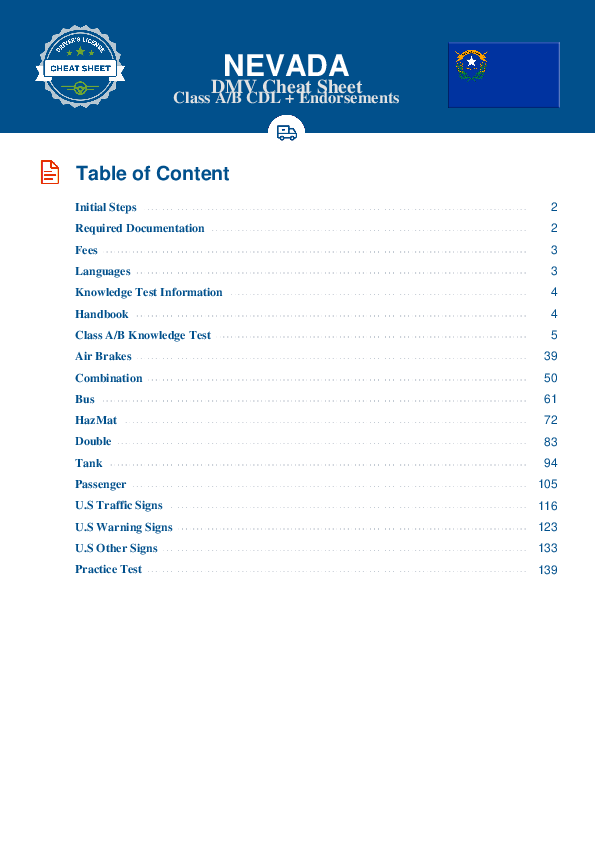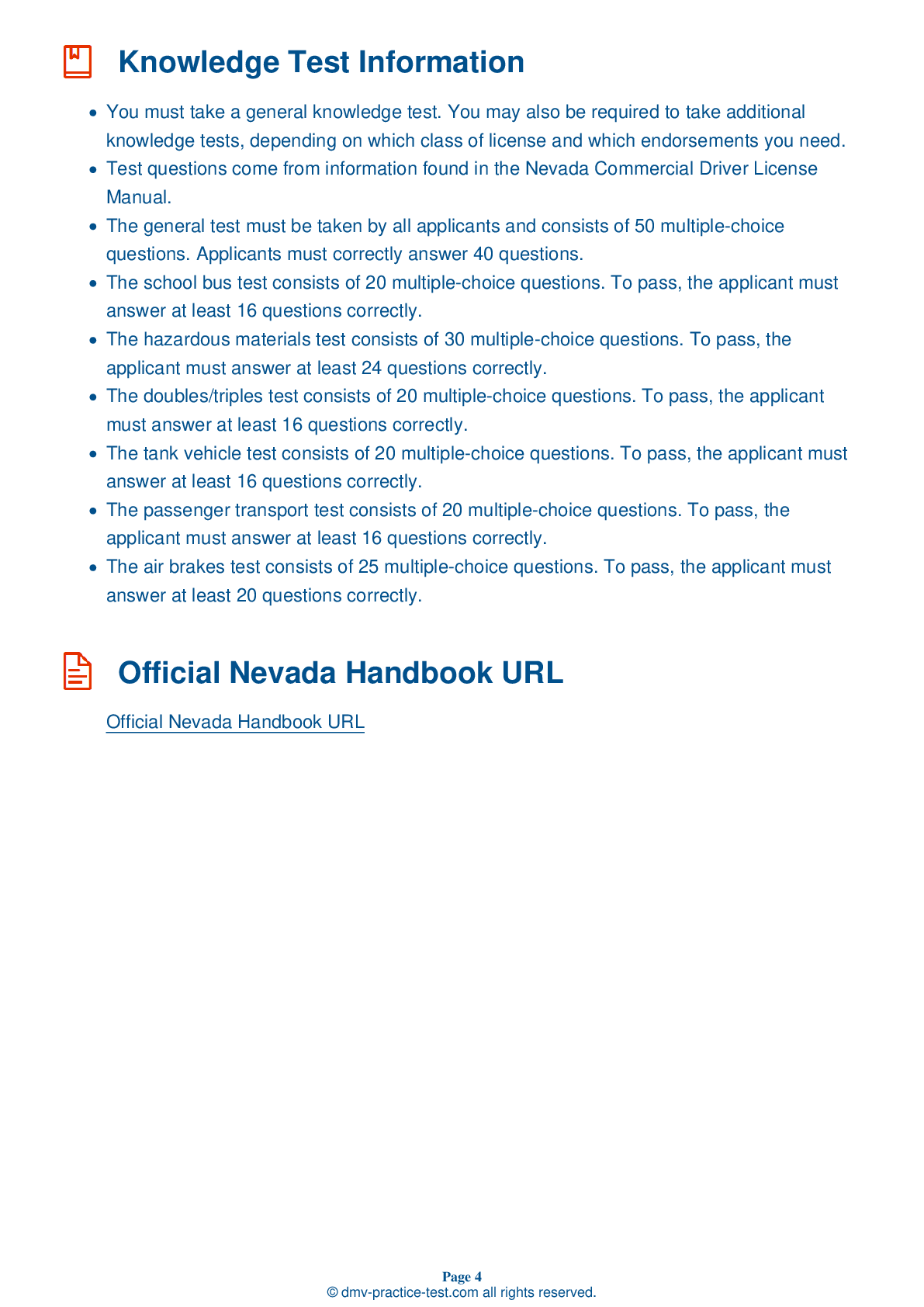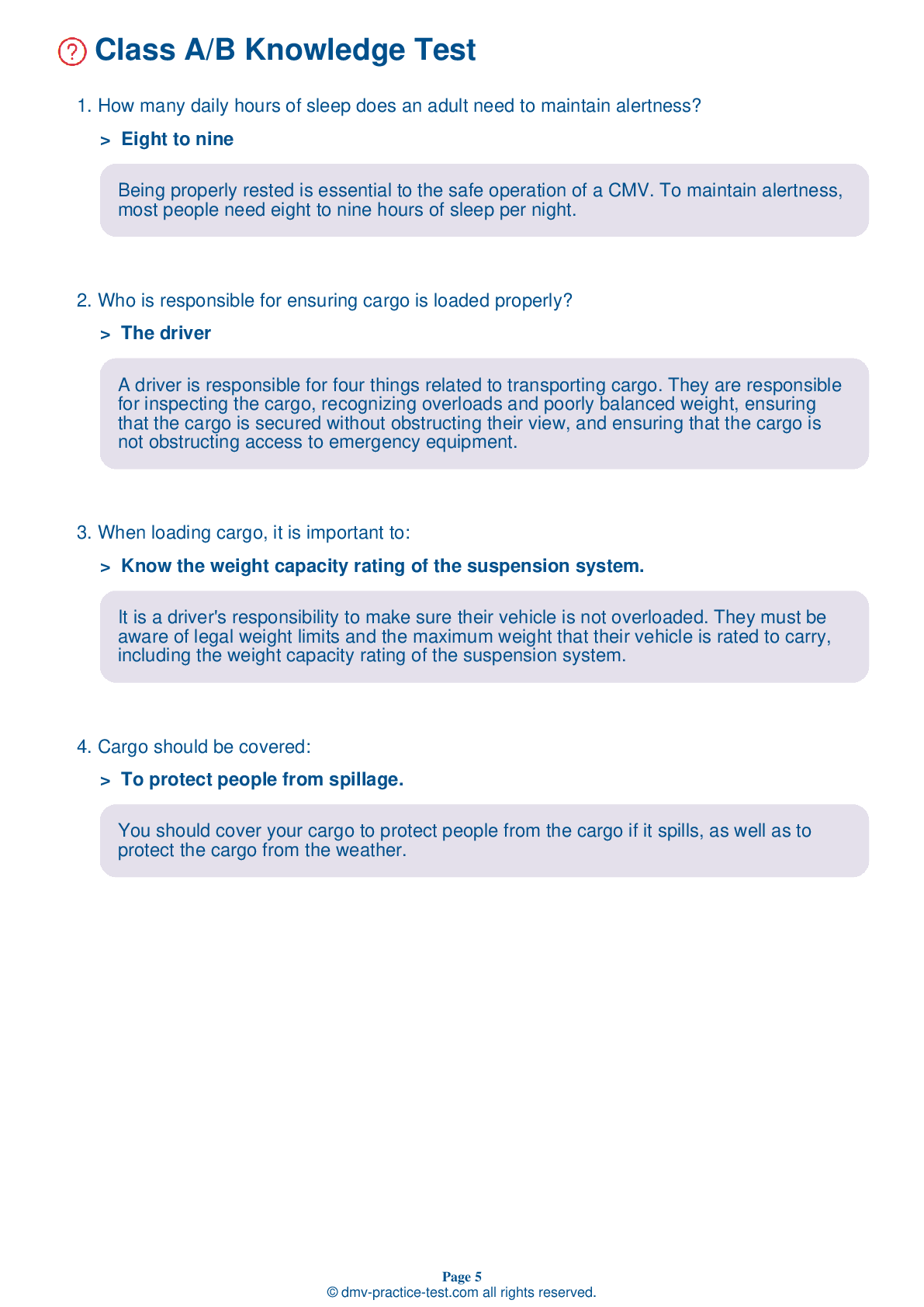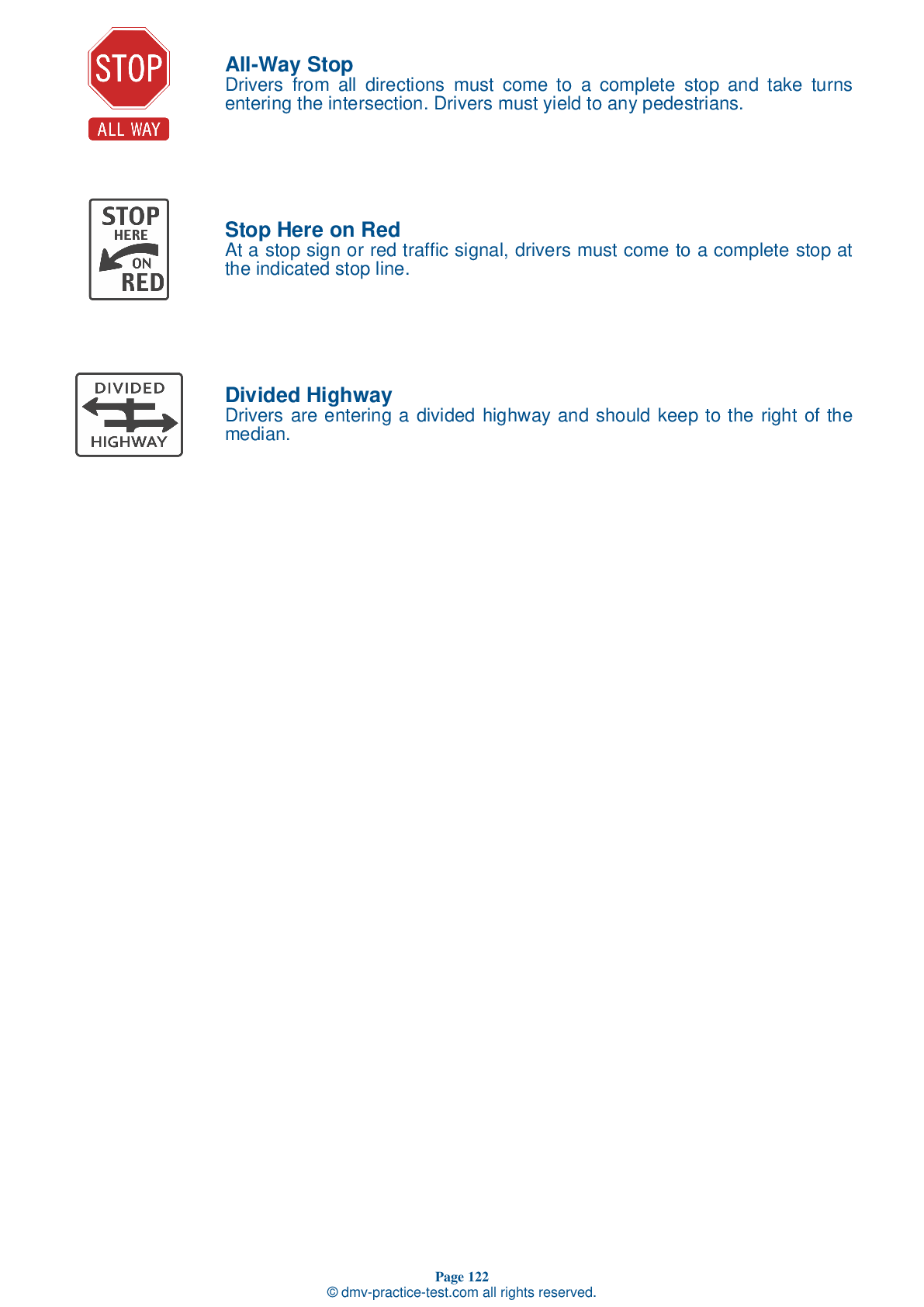Double #2
Double Triple Test | Nevada 2025 #2 Page 3 of 3
Train for FREE with our Nevada CDL double triple practice test online. The official exam test consists of several obligatory parts, with all of them checking your knowledge of different blocks of road rules. If you need to obtain a NV CDL double triple license in 2025, practice as much as possible. Free sample tests published on our website will help you check and improve your knowledge and boost your grades. Please bear in mind that DMV requirements may vary from state to state.
20
16
20
15 . What helps prevent wheel lockup when braking?
The purpose of an Anti-Lock Braking System (ABS) is to prevent wheel lockup while brakes are being applied.
16 . When an engine is running, an acceptable oil pressure would be:
Operating oil pressure should be between 35 and 75 psi. Do not operate a vehicle if it has oil pressure that is low, dropping, or fluctuating.
17 . After finishing a pre-trip inspection, you should:
Leave the rear shut-off valves open.
Before a trip, you should ensure that air reaches all air brakes on all trailers by opening up the rear emergency line and service line shut-off valves to listen for escaping air. Close both shut-off valves before beginning to drive.
18 . How can you tell if a converter dolly has anti-lock brakes?
There will be a blue light on the side of the dolly.



